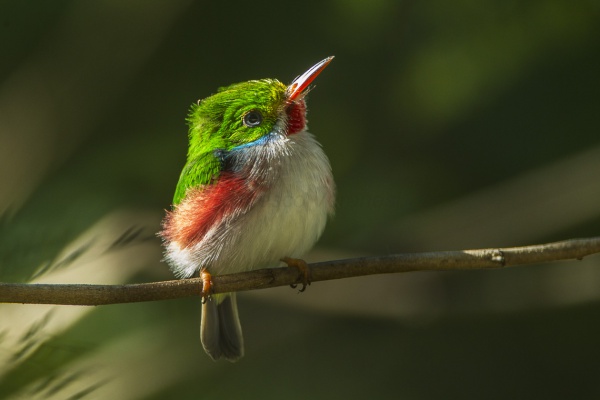Facts About Cuban tody
The Cuban tody is a charming little bird belonging to the Todidae family, native to Cuba and its nearby islands. It can be recognized by its petite size and comparatively large head, complemented by a thin, flat bill. Its vibrant plumage includes an iridescent green back, a pale whitish-grey belly, and striking red accents. Additionally, it features pink flanks, a red throat, yellow lores, and a blue patch near its ears. Notably, its bill is two-toned, with black on top and red on the bottom.
You can find the Cuban tody in various regions across Cuba and the surrounding islands, with distinct populations in the eastern and western parts of the country. These birds are not particularly selective about their habitat; they thrive in dry lowlands, evergreen forests, coastal areas, and places near water. Despite their vibrant colors, they can be difficult to spot but are often identified by their unique calls such as "tot-tot-tot-tot" and "pprreeee-pprreeee." During their display flights, their wings produce a distinctive whirring sound.
Cuban todies are typically seen in pairs and construct their nests by digging tunnels in clay embankments or decaying tree trunks. Both parents share the responsibility of incubating the eggs, demonstrating a strong sense of partnership.
Their diet primarily consists of insects, but they also enjoy small fruits, spiders, and even tiny lizards. These birds often join mixed-species flocks and face threats from humans, particularly in impoverished areas, and from predators like the mongoose. While not extensively studied, the Cuban tody plays a crucial role in its ecosystem, contributing to the delicate balance of nature.
